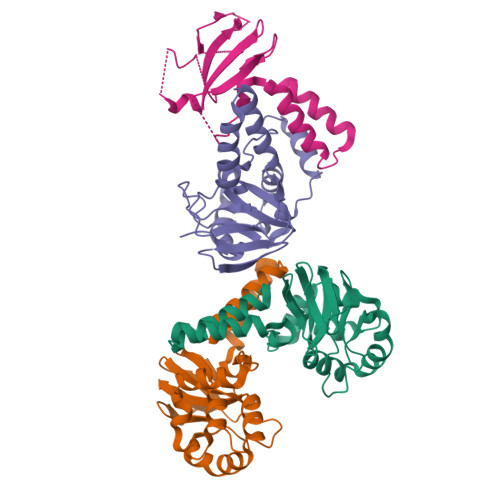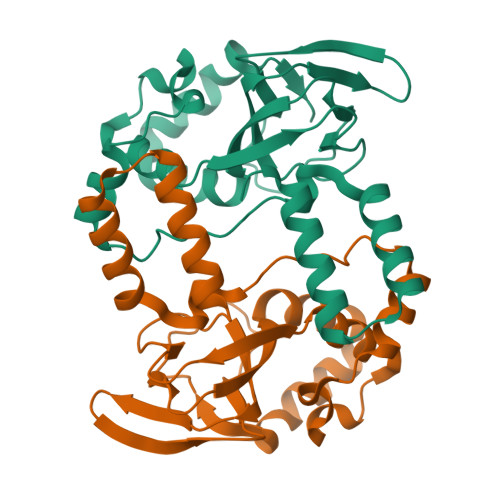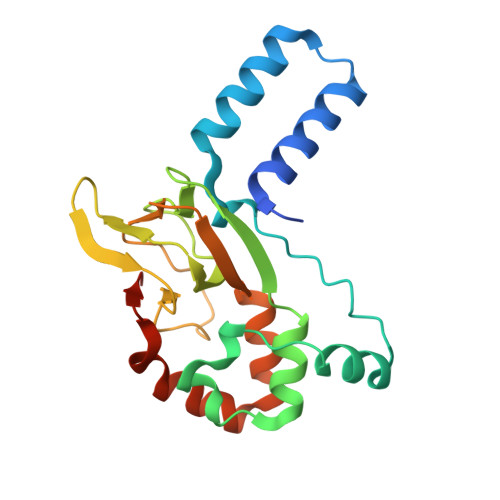Structure of the carboxy-terminal region of a KCNH channel.
Brelidze, T.I., Carlson, A.E., Sankaran, B., Zagotta, W.N.(2012) Nature 481: 530-533
- PubMed: 22230959
- DOI: https://doi.org/10.1038/nature10735
- Primary Citation of Related Structures:
3UKN, 3UKT, 3UKV - PubMed Abstract:
The KCNH family of ion channels, comprising ether-à-go-go (EAG), EAG-related gene (ERG), and EAG-like (ELK) K(+)-channel subfamilies, is crucial for repolarization of the cardiac action potential, regulation of neuronal excitability and proliferation of tumour cells. The carboxy-terminal region of KCNH channels contains a cyclic-nucleotide-binding homology domain (CNBHD) and C-linker that couples the CNBHD to the pore. The C-linker/CNBHD is essential for proper function and trafficking of ion channels in the KCNH family. However, despite the importance of the C-linker/CNBHD for the function of KCNH channels, the structural basis of ion-channel regulation by the C-linker/CNBHD is unknown. Here we report the crystal structure of the C-linker/CNBHD of zebrafish ELK channels at 2.2-Å resolution. Although the overall structure of the C-linker/CNBHD of ELK channels is similar to the cyclic-nucleotide-binding domain (CNBD) structure of the related hyperpolarization-activated cyclic-nucleotide-modulated (HCN) channels, there are marked differences. Unlike the CNBD of HCN, the CNBHD of ELK displays a negatively charged electrostatic profile that explains the lack of binding and regulation of KCNH channels by cyclic nucleotides. Instead of cyclic nucleotide, the binding pocket is occupied by a short β-strand. Mutations of the β-strand shift the voltage dependence of activation to more depolarized voltages, implicating the β-strand as an intrinsic ligand for the CNBHD of ELK channels. In both ELK and HCN channels the C-linker is the site of virtually all of the intersubunit interactions in the C-terminal region. However, in the zebrafish ELK structure there is a reorientation in the C-linker so that the subunits form dimers instead of tetramers, as observed in HCN channels. These results provide a structural framework for understanding the regulation of ion channels in the KCNH family by the C-linker/CNBHD and may guide the design of specific drugs.
Organizational Affiliation:
Department of Physiology and Biophysics, University of Washington School of Medicine, Box 357290, Seattle, Washington 98195-7290, USA.

















